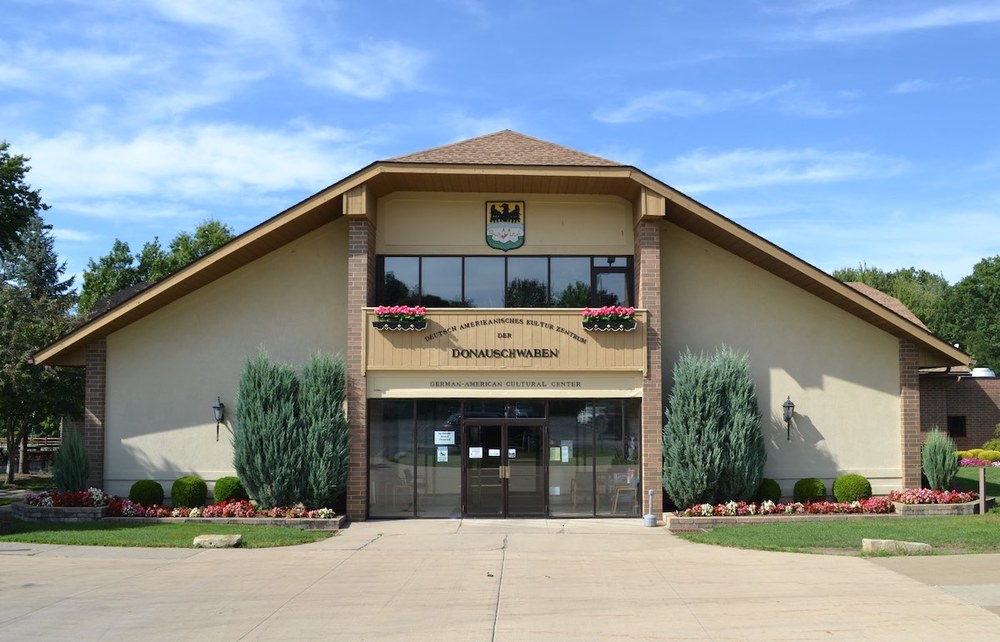Donauschwaben German-American Cultural Center

German-speaking immigrants have been settling in Cleveland for more than two centuries and remain one of the largest and most influential ethnic groups. Unbeknownst to many though, the end of World War II brought a wave of ethnic Germans from Eastern Europe to the city in the 1950s. These people are known as Danube Swabians, an homage to their early 18th-century Swabian ancestors who left Germany by invitation to colonize parts of the Danube River Valley in the Austro-Hungarian Empire in what is today mostly Hungary, Romania, Croatia, and Serbia. Having kept their language and culture alive through the centuries, Germany’s defeat in World War II, followed by Soviet occupation of that region, meant oppression, incarceration, and death for many of the nearly two million ethnic Germans caught behind the Iron Curtain. This subjugation led to the forced migration of several hundred thousand Danube Swabians who came to the United States in the largest numbers from 1950 to 1952, many settling in Cleveland, where they found work, raised families, and forged new, unbreakable ties to their new homeland.
Like so many immigrants, the Cleveland Danube Swabians unsurprisingly sought to preserve key aspects of their cultural identity, namely through associational life. That first began by mixing with the Banater Club, an existing German-speaking organization which had a small building (Banater Hall) on W. 140th Street near Lorain Avenue. There the Danube Swabians joined recreational groups, such as Gesangvereine (choirs) and folk dance troops, and introduced their own youth and sports initiatives as well as educational opportunities. In 1958 the Society of Danube Swabians was formerly recognized and elected its first president, Anton K. Rumpf. A year later a women’s group was formed with leadership from President Katharina Ritzmann. By 1960 the Society had formalized its bylaws and structure, elected a Board, and endeavored to grow the organization. This was done so successfully that it was soon clear they had outgrown the Banater Club. For the festive annual events like Tag der Donauschwaben (Day of the Danube Swabians), Trachtenfest (Folk Costume Festival), and Weihnachtsfeier (Christmas Celebration), they had to rent spaces to accommodate the large crowds. German language course offerings, known first as Weekend School, soon had to be held in classrooms in local churches. By 1970 the Weekend School was renamed the German Language School and offered classes for varying age levels as well as kindergarten in rooms at St. Stephen’s Catholic Church. That same year the Board approved the use of $97,000 in member donations to purchase Ritter Farm, a 17-acre parcel off Columbia Rd. in Olmsted Township, in the hope it would eventually accommodate the needs of the Cleveland Danube Swabian community.
Soon after closing the deal the land was cleared and leveled by member volunteers. In short order soccer fields, tennis courts, a pond, as well as a bar, picnic and restroom facilities were installed, but no large central building yet for its many indoor programs. The new property was renamed “Lenau Park,” after Nikolaus Lenau, a famed 19th-century German poet (from what is today Romania) who had settled in Ohio for a short time in the 1830s. Economically speaking, the 1970s were a terrible time to commence such a project as the United States soon entered its worst economic downturn since the Great Depression. Undaunted, the group proceeded with planning and fundraising for its main clubhouse under the tireless efforts of then President Josef (Sepp) Holzer. Construction eventually began in 1980 and culminated in the Donauschwaben Deutsch-Amerikanishes Kulturzentrum (Danube Swabian German-American Cultural Center), a 46,000 plus sq. ft. multi-level building that is today replete with sundry class, meeting, and dance rooms, a two-lane bowling alley, an indoor soccer field with locker and shower facilities, as well as a central ballroom. Named in honor of Josef Holzer (Holzer Halle), the ballroom has kitchen, bar, and restroom facilities to accommodate nearly 600 people. Dedication ceremonies were held on the 17th and 18th of May, 1986, the first day in English, the second in German. The keynote address on that first day was given by Cleveland State University President Walter B. Waetjen, himself of German descent.
A motto of sorts sits high above the stage in Holzer Halle. The Josef Linster quote reads “Nur der ist seiner Ahnen wert, der ihre Sitten treu verehrt.” This translates roughly to “Only those who honor the traditions of their ancestors are worthy to be their descendant.” Whether consciously or not, the newer generations of leadership have imbibed this sage message. Just as the founders had intended, the Cultural Center continues to be a conduit for German language and culture. Today, the German Language School offer eight levels of language instruction for children and six levels for adults as well as national and international proficiency exam testing. The strong tradition of associational life is alive and well too. For those interested in sports, the Concordia Soccer Club, the Blau-Weiss Tennis Group, the Edelweiss Ski Club, or the Kegelverein (bowling club) fit the bill. Dance groups for all ages, a choir group (Banater Chor), and the Blaskapelle (Brass Band) uphold musical traditions. The event calendar is packed all year round, from Lenten fish fries to the massive Oktoberfest celebration. And one certainly need not be of German heritage to join in the fun. Shaped by their history, from being guest immigrants in a foreign land in the 18th century to Vertriebene (expellees) in the 20th century, they value inclusivity and welcome their neighbors, thus personifying an American ideal that we still struggle with today.
Images








